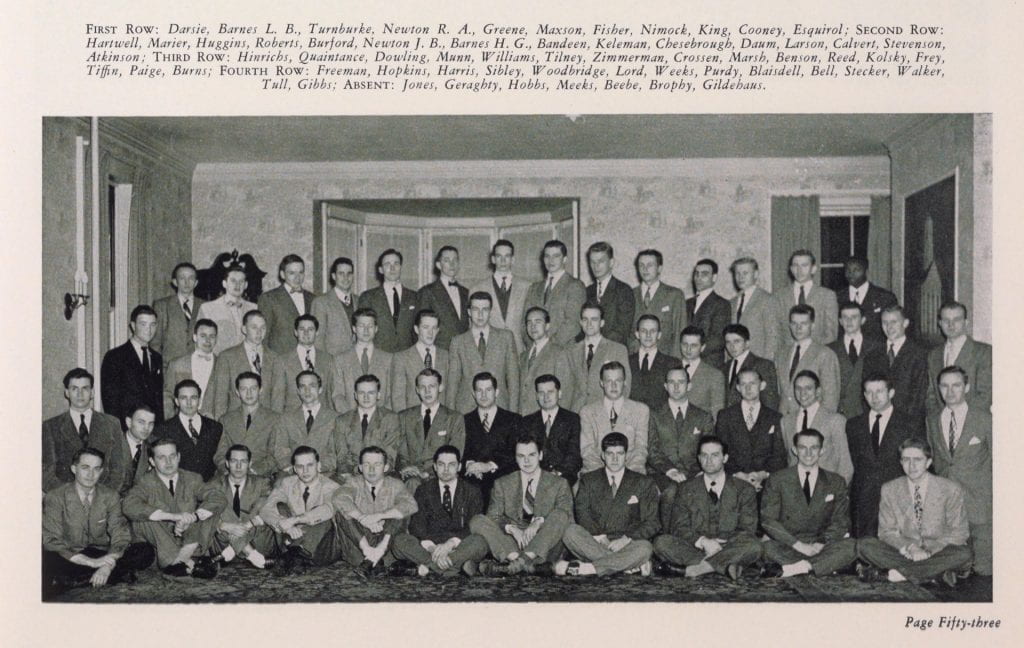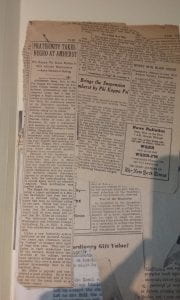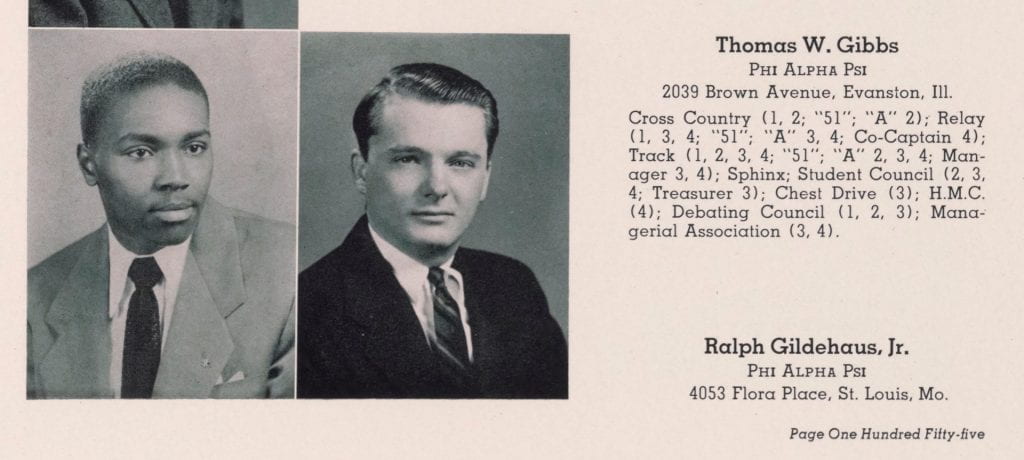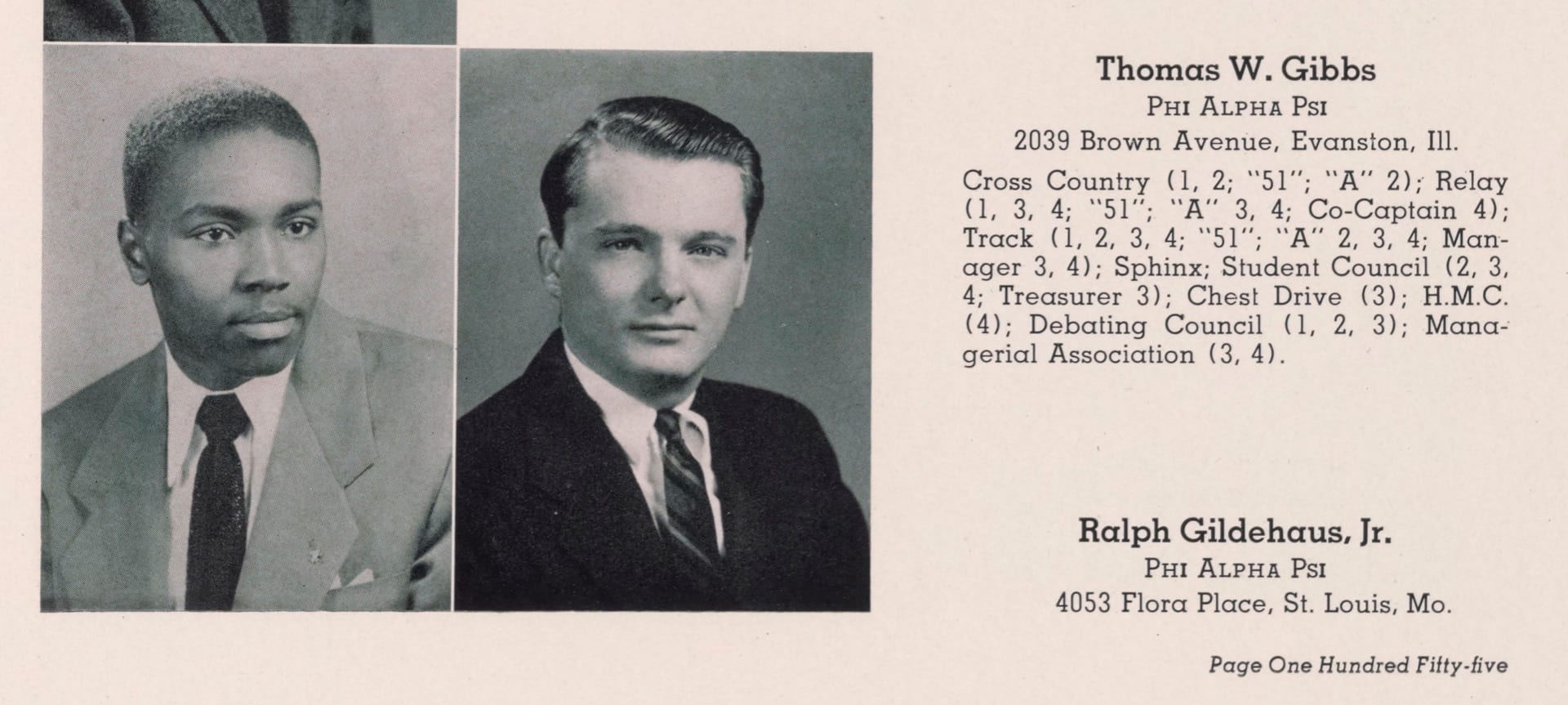Established in 1922, Charles Drew House possesses a storied past, most notably holding the distinction of welcoming Amherst College’s first African American fraternity member, Thomas Gibbs.

Fraternities have always been interesting institutions for me and have a long history on Amherst College’s campus. When I was first looking into the history of Drew House, I expected to read some information regarding Charles Drew himself and, at that point, was unaware of its fraternal background. However, when I stumbled across facts about Phi Kappa Psi and the fraternity’s history Drew House, I knew its story would offer more insight into the College and the nation’s racial relations in the mid-1940s.

Drew House was first occupied by the Phi Kappa Psi fraternity in the 1920s, following renovations of the building, which previously served as the residence of former Amherst College president Julius Seelye. During WWII, Phi Kappa Psi and other campus fraternities came close to losing their homes. However, with the promise of reforms and alumni support, the fraternities convinced the board of trustees to allow fraternities to stay under one condition:
“…fraternities would be required to remove any clause in their constitutions that discriminated against pledges based on race, ethnicity, or religion.”
A simple enough request, I suppose.
The fraternities had to “put their money where their mouth was” when Phi Kappa Psi pledged its first African American student, Thomas Gibbs, at Amherst College in 1948. Gibbs, a class officer and member of the track team, was liked by many; one PKP brother described him as “quiet but not shy, and all in all, an extra special sort of fellow.” (whatever that means). While Amherst seemed to be on the more progressive side of fraternal politics, the national Phi Kappa Psi fraternity was not and pressure the Amherst chapter into depledging Gibbs until the fraternity had ample time to consider the affair. This incident received local and national news coverage. After polling Amherst alumni and the national Phi Kappa Psi community in the fall of 1948, the Amherst chapter moved forward with its plan to pledge Gibbs. Their perceived defiance led the national assembly to pull the Amherst chapter’s charter; it then became a local fraternity – Phi Alpha Psi.
So, why does this matter? Well, have you heard about Thomas Gibbs up to this point? I imagine the answer is “no,” but it is about more than simply who “has” and “has not” heard about this student. The question is, why haven’t we heard about this student? I am not here to argue for a “Gibbs House”; surely that would be too big an ask and would remove the name of an incredible alumnus, Charles Drew.

We should remember Thomas Gibbs, our first Black fraternity member, and the bravery required by his brothers to stand up for him against those in the national assembly. At this moment, an entirely white fraternity stood up for their Black brother because it was the right thing to do – that is worth remembering.
Although we no longer have fraternities here at Amherst College, I will forever look back fondly on those who gave Thomas Gibbs and future students of color the chance to be part of a brotherhood they so profoundly valued.
– Edmund Kennedy ‘23E

You must be logged in to post a comment.